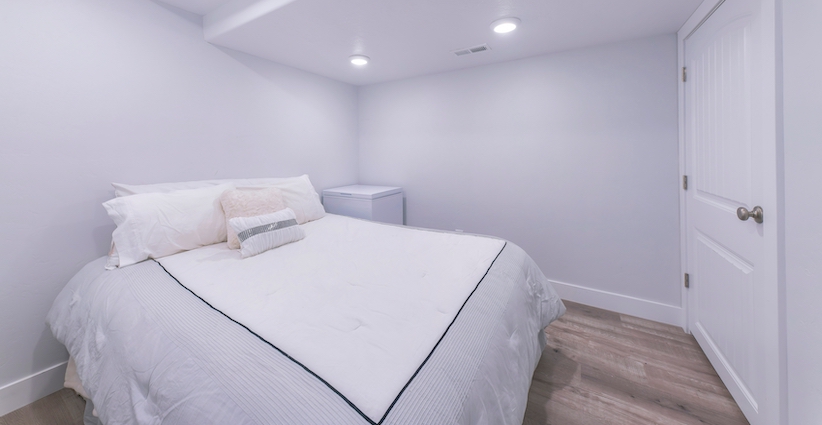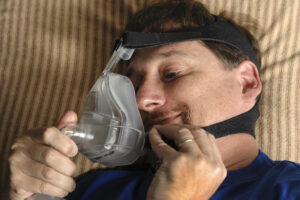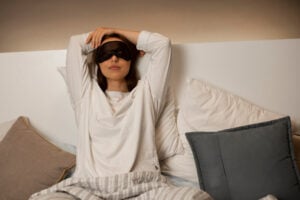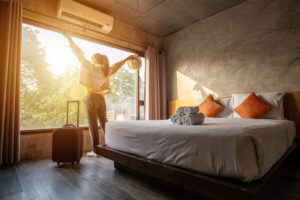The Windowless Bedroom Debate Heats Up

As a nationwide housing shortage continues to drive rental prices sky high, a debate about allowing more windowless bedrooms – one possible solution to adding more inventory – is heating up.
Proponents view unused office space as an untapped resource. Those opposed question the potential negative health effects on people, particularly regarding fresh air, natural light, and sleep.
Bedrooms without windows already exist. Sometimes these are unorthodox, potentially illegal arrangements that leverage attics, basements, or storage rooms like a pantry or walk-in closet for a sleep space. In population-dense environments like New York City, it is also common to create bedrooms out of larger spaces like living rooms, using temporary walls that cut off access to the windows, even though these violate building codes. But some building codes do allow window-free housing, such as at some state university dorms.
The debate over these rooms kicked into high gear last year when New York City’s Mayor Eric Adams called for new rules to allow for windowless bedrooms, which could help repurpose the city’s vacant office space and promote housing affordability. Philadelphia and Washington D.C., which do not specifically ban windowless bedrooms, have seen more empty offices successfully converted to housing than New York.
But it’s not just a big-city issue. Austin, Texas, passed a resolution last year to ban new housing with such bedrooms. The University of California Santa Barbara abandoned plans to build a dorm funded by a wealthy donor that would have featured windowless rooms.
In the late 1800s, industrialization and rapid immigration saw overcrowded tenement housing in many American cities, where small rooms were so poorly ventilated, hot, and stifling that sleep was nearly impossible. Progressive-era activists helped push cities like New York to adopt building codes that banned bedrooms without windows.

According to Architectural Digest, Mayor Adams argued in favor of overturning the ban, telling a crowd, “You know, when you sleep, it should be dark.” But does the mayor’s view of windowless bedrooms tell the full story?
Good ventilation is important no matter where you sleep, and recent research has shown that better air quality and sleep quality go hand in hand. But even when a bedroom has a window, people still tend to sleep with it closed. So, good ventilation is important regardless of whether or not a window is present. A bedroom may also benefit from an air filtration system that removes indoor air pollutants and particulate matter.
And while Mayor Adams is right that darkness is good for sleep, a natural, gradual increase in light helps tell the body’s clock when it is time to wake up. Those who sleep in bedrooms with no access to natural light might want to consider a circadian rhythm light. These lights operate on a timer and naturally increase light in the room based on when it is daylight outside or when you set your alarm.
While bedrooms without views may be a way to help solve the housing crunch, concerns about sleeping in them can’t go out the window. Ensuring they have plenty of fresh air and the right daytime lighting could help all rest easier.
Got a hot tip? Pitch us your story idea, share your expertise with SleepFoundation.org, or let us know about your sleep experiences right here.
References
8 Sources
-
Federal Reserve Bank of St. Louis (2024). Consumer Price Index for All Urban Consumers: Rent of Primary Residence in U.S. City Average, Retrieved March 4, 2024 from
https://fred.stlouisfed.org/series/CUUR0000SEHA -
Relman, E. (March 25, 2023). Sunlight in your bedroom could become a luxury as cities debate allowing landlords to rent windowless rooms in former office buildings to alleviate the housing crisis. Business Insider., Retrieved March 4, 2024, from
https://www.businessinsider.com/renting-windowless-bedrooms-low-income-tenants-housing-crisis-eric-adams-2023-3 -
Avery, D., (March 24, 2023) Wait, Are Windowless Bedrooms Going to Be a Thing? Architectural Digest., Retrieved March 4, 2024, from
https://www.architecturaldigest.com/story/wait-are-windowless-bedrooms-going-to-be-a-thing -
Brager, S. (September 14, 2023). Austin City Council approves windowless housing resolution, preventing construction of new windowless bedrooms. The Daily Texan., Retrieved March 4, 2024, from
https://thedailytexan.com/2023/09/14/austin-city-council-approves-windowless-housing-resolution-preventing-construction-of-new-windowless-bedrooms/ -
Roche, D., (August 9, 2023) University of California abandons plans to build “windowless dorm” Munger Hall. The Architect’s Newspaper., Retrieved March 4, 2024, from
https://www.archpaper.com/2023/08/university-california-abandons-windowless-dorm-munger-hall/ -
Smithsonian American Art Museum (n.d.) Tenement Life., Retrieved March 4, 2024, from
https://americanexperience.si.edu/wp-content/uploads/2013/11/Tenement-Life_.pdf -
Fan, X, et al. (2023). A single-blind field intervention study of whether increased bedroom ventilation improves sleep quality. Science of the Total Environment, 884,, Retrieved March 4, 2024, from
https://www.sciencedirect.com/science/article/pii/S0048969723024269 -
Blume, C., Garbazza, C., & Spitschan, M. (2019). Effects of light on human circadian rhythms, sleep and mood. Somnologie : Schlafforschung und Schlafmedizin = Somnology : sleep research and sleep medicine, 23(3), 147–156.
https://pubmed.ncbi.nlm.nih.gov/31534436/













































































































































